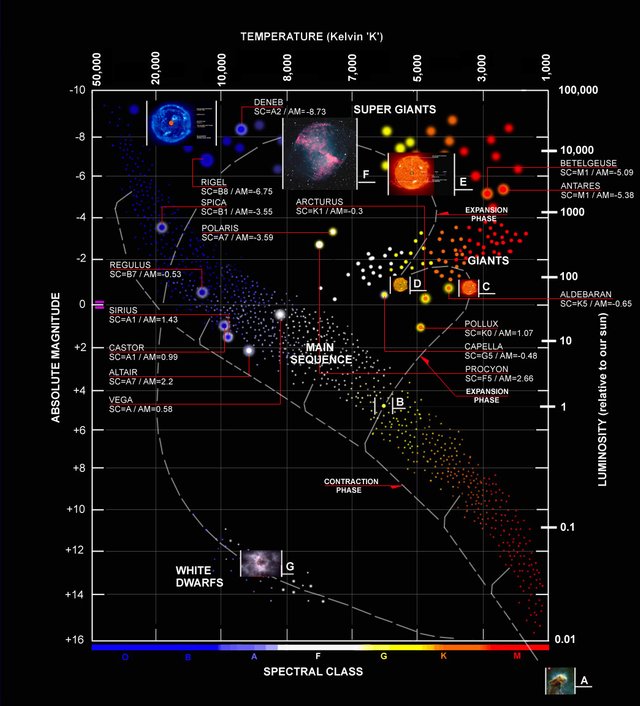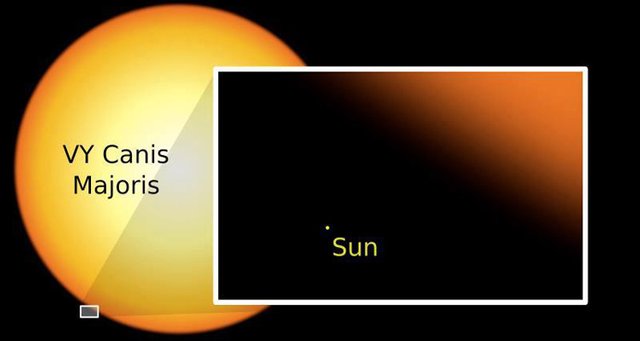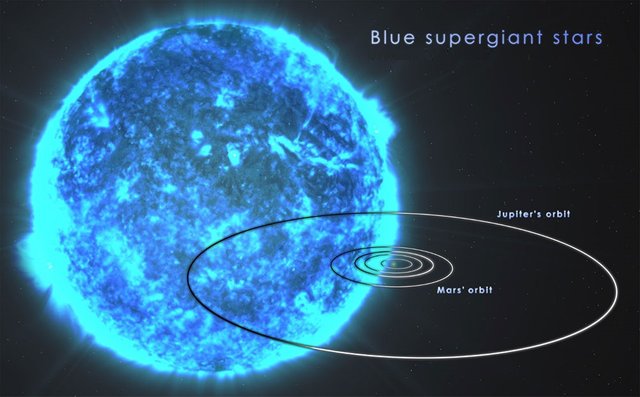Classification of Star

At first glance the stars in the sky look the same color, that is white. But if we observe more thoroughly through telescopes, it turns out the stars have colors, some are red, blue, yellow and so forth. The star color indicates the star's temperature. The more blue the color of a star, the hotter the star. Our sun is a yellow star whose temperatures are about 6000 0K.
The information we get about a star will be more complete if we have a prism attached to the telescope so that the light of the stars that come can decompose. From here we can get a more complete picture of the star, for example about its chemical composition, its rotation and its movement. The spectrum of a star is very important and is used as a way to classify stars.

Based on its spectrum, stars are divided into 7 main classes expressed by the letters O, B, A, F, G, K, M which also indicate their temperature, color and chemical composition sequence. This classification was developed by the Harvard University Observatory and Annie Jump Cannon in the 1920s and is known as the Harvard classification system. To remember this classification sequence is usually used the phrase "Oh Be A Fine Girl Kiss Me". With better spectrogramming quality allows classification into 10 sub-classes indicated by a number (0 to 9) that follow the letter. It is customary to call the stars at the start of the sequence as the star of the early type and the end of the sequence as the final type star. Thus, A0 star is earlier than F5, and K0 is earlier than K5.
Here is a list of star classes from the hottest to the coldest (with mass, radius and luminosity in units of the Sun).

The Hertzsprung-Russell diagram or H-R diagram (often referred to as the color-magnitude diagram) is a diagram of the relationship between absolute magnitude / luminosity and the spectral class of the star / color index. This diagram was developed separately by Danish astronomer Eijnar Hertzsprung in 1911 and American astronomer Henry Norris Russell in 1913. This diagram is very important in astrophysics especially in the field of star evolution.

The Hertzsprung-Russell diagram plots out of 22,000 stars whose data are from the Hipparcos catalog and 1000 from the Gliese catalog. It appears that the stars tend to cluster in certain parts of the diagram. The most dominant is the group that forms the diagonal diagram of the upper left (hot and brilliant) to the lower right (cold and less bright) called the main sequence. The sun lies in the main sequence with luminosity 1 (magnitude of about 5), and a surface temperature of about 5400K (spectral class G2). By consensus, the x-axis from left to right expresses high temperature to low temperature (but 'color' from small to large).
Below is shown the characteristics of each class. Keep in mind that these characteristics primarily depend on the appearance of the spectral line absorption lines (not the color or the effective temperature).

The star of class O is the hottest star, its surface temperature is more than 25,000 Kelvin. The main sequence star of class O is the most blue-looking star, although in fact most of its energy is emitted at the wavelength of purple and ultraviolet. In the spectral pattern the strongest absorption lines come from the ionized Helium atoms 1 (He II) and the ionized carbon twice (C III). The absorption lines of other ions are also seen, among which are derived from oxygen ions, nitrogen, and silicon. The lines of Balmer Hydrogen (hydrogen neutral) are not visible because almost all hydrogen atoms are in ionized state. The main sequence star of class O is actually the least common star among the other main sequence stars (the ratio is roughly 1 star of class O among the 32,000 main sequence stars). But because of the brightest, it is not too difficult to find it. The star of class O shines with energy 1 million times the energy produced by the Sun. Because it is so massive, class star O burns its hydrogen fuel very quickly, so it is the first star to leave the main sequence (see Hertzsprung-Russell Diagram).
Example: Zeta Puppis

Class B stars are hot enough stars with surface temperatures between 11,000 to 25,000 Kelvins and are white-blue. In the spectral pattern the strongest absorption lines come from neutral Helium atoms. The Balmer lines for Hydrogen (neutral hydrogen) appear to be stronger than that of the class of O. Class stars O and B have very short lives, so they can not move far from the area where they are formed, and therefore tend to gather together in an association of OB . Of the entire population of main sequence stars there are about 0.13% of class stars B.
Example: Rigel, Spica

Class A stars have surface temperatures between 7,500 to 11,000 Kelvins and are white. Since it is not too hot the hydrogen atoms in its atmosphere are in a neutral state so that the Balmer lines will look the strongest in this class. Some ionized ion uptake lines, such as magnesium, silicon, iron and calcium are ionized once (Mg II, Si II, Fe II and Ca II) also appear in the spectral pattern. Class A stars are roughly 0.63% of the population of the main sequence stars.
Example: Vega, Sirius

F class stars have a surface temperature of 6000 to 7500 Kelvin, white-yellow. The spectrum has a weaker pattern of Balmer lines than the class A star. Some ionized ionized uptake lines, such as Fe II and Ca II and neutral metal such as neutral iron (Fe I) are beginning to appear. Class F stars are approximately 3.1% of the population of the main sequence stars.
Example: Canopus, Procyon

G-class stars are probably the most studied because the Sun is the star of this class. Class G stars have surface temperatures between 5000 to 6000 Kelvin and are yellow. The Balmer lines on the stars of this class are weaker than the class star F, but the metal and metal neutral stripes are getting stronger. The most famous spectrum profile of this class is the profile of the Fraunhofer lines. G-class stars are about 8% of the entire population of main sequence stars.
Example: Sun, Capella, Alpha Centauri A

The orange-colored K-star has a slightly cooler temperature than the Sun-like stars, between 3500 to 5000 Kelvin. Alpha Centauri B is the main sequence star of this class. Some of the class stars of K are gigantic and enormous, such as Arcturus. The K-class stars have very weak Balmer lines. Neutral metal stripes appear to be stronger than the class star G. The molecular lines of Titanium Oxide (TiO) begin to appear. K-class stars are about 13% of the entire population of the main sequence stars.
Example: Alpha Centauri B, Arcturus, Aldebaran

The class M stars are the stars with the most populations. This star is red with a surface temperature lower than 3500 Kelvin. All the red dwarfs are the stars of this class. Proxima Centauri is one example of the main sequence star of the class M. Most stars in the gigantic and omnipotent phases, such as Antares and Betelgeuse are the class. The absorption lines in the spectrum of class M stars are mainly of neutral metal. The lines of Balmer were barely visible. The molecular lines of Titanium Oxide (TiO) are very visible. The class M stars are about 78% of the population of the main sequence stars.
Example: Proxima Centauri, Antares, Betelgeuse

The Great Mega Star (hypergiant) is the most massive and brightest star known. The gigantic star has a mass of about 100-150 solar masses, approaching Eddington's borders, the theoretical upper limit of the star's mass, after the star begins to cast large amounts of matter due to the great radiation. The gigantic star may be thousands to 40 million times more brilliant than the Sun.
Because hypergiants are so large, their nuclei are extremely hot and pressurized, causing rapid nuclear fusion, turning hydrogen into helium, then into carbon, fluorescent, oxygen, and ultimately silicon. As silicon joins into iron, a process that lasts only a few weeks, the star can not extract more energy from nuclear fusion (iron fusion requires a greater temperature) and supernovae occur when the star core collapses and then "bounces back" out. The exploding hypergiant star is called "Hypernova."

Hypergiant stars have a radius between 1000 to 1700 times the radius of the Sun. VY Canis Majoris, a gigantic red hypergiant, has a radius of 1.420 times the radius of the sun. Like the main sequence stars, hypergiants also consist of several spectra: there are blue hypergiants, yellow hypergiants, and red hypergiants.
Hypergiant stars are short-lived, only a few million years before they hypernova. As a result, they are relatively rare and theories about hypergiants are limited by scarce data. Among the most rare classes of hypergiants are yellow hypergiants, of which there are only about seven in our galaxy.
Red Giant Stars
Example: NML Cygni
NML Cygni or V1489 Cygni is the largest red and hypergiant star and the most famous known star, has a radius of about 1,650 times the radius of the Sun or 7.67 AU. This is one of the giant super stars whose luminosity is very extreme. Its distance from the earth is estimated at about 1.6 kpc, or about 5,300 light-years. The star is surrounded by dust around it. and dust shows an asymmetric nebular node coinciding with the H2O maser vapor distribution.

The bolometric luminosity (Lbol) for this star is almost 3 × 105 L☉. Its bolometric magnitude (Mbol) is about -9.0. Make it one of the brightest brightest hypergiant stars.
Blue Giant Star
Example: R136a1
Discovered in early July 2010, R136a1 is the most massive star and at the same time has the highest known luminosity. The mass of stars today is almost 265 times the mass of the sun. But when born (about a million years ago), this star has a mass 320 times the mass of the Sun. However, very massive stars will quickly lose mass by converting them into energy. R136a1 has lost 20 percent of its mass over the years. By comparison, the sun has been 'burning' for about 4.57 billion years, and has just changed 0.03 percent of its mass into energy.

Best Regard @alf4t1h
Reference :
Nice post @alf4t1h " Oh Be A Fine Girl Kiss Me." Nice phrase to remember the classification. Simple language makes it easier to understand. I am New here and I am a medical student and I make a post about medical issues. Please follow me and help me to grow in steemit. Thank you.
thanks @medicolife. welcome to steemit. I am still new here, still need a lot of learning. hopefully we can both help each other
Congratulations! This post has been upvoted from the communal account, @minnowsupport, by alf4t1h from the Minnow Support Project. It's a witness project run by aggroed, ausbitbank, teamsteem, theprophet0, someguy123, neoxian, followbtcnews, and netuoso. The goal is to help Steemit grow by supporting Minnows. Please find us at the Peace, Abundance, and Liberty Network (PALnet) Discord Channel. It's a completely public and open space to all members of the Steemit community who voluntarily choose to be there.
If you would like to delegate to the Minnow Support Project you can do so by clicking on the following links: 50SP, 100SP, 250SP, 500SP, 1000SP, 5000SP.
Be sure to leave at least 50SP undelegated on your account.
Thank you alf4t1h for making a transfer to me for an upvote of 2.96% on this post!
Half of your bid goes to @budgets which funds growth projects for Steem like our top 25 posts on Steem!
The other half helps holders of Steem power earn about 60% APR on a delegation to me!
For help, will you please visit https://jerrybanfield.com/contact/ because I check my discord server daily?
To learn more about Steem, will you please use http://steem.guide/ because this URL forwards to my most recently updated complete Steem tutorial?